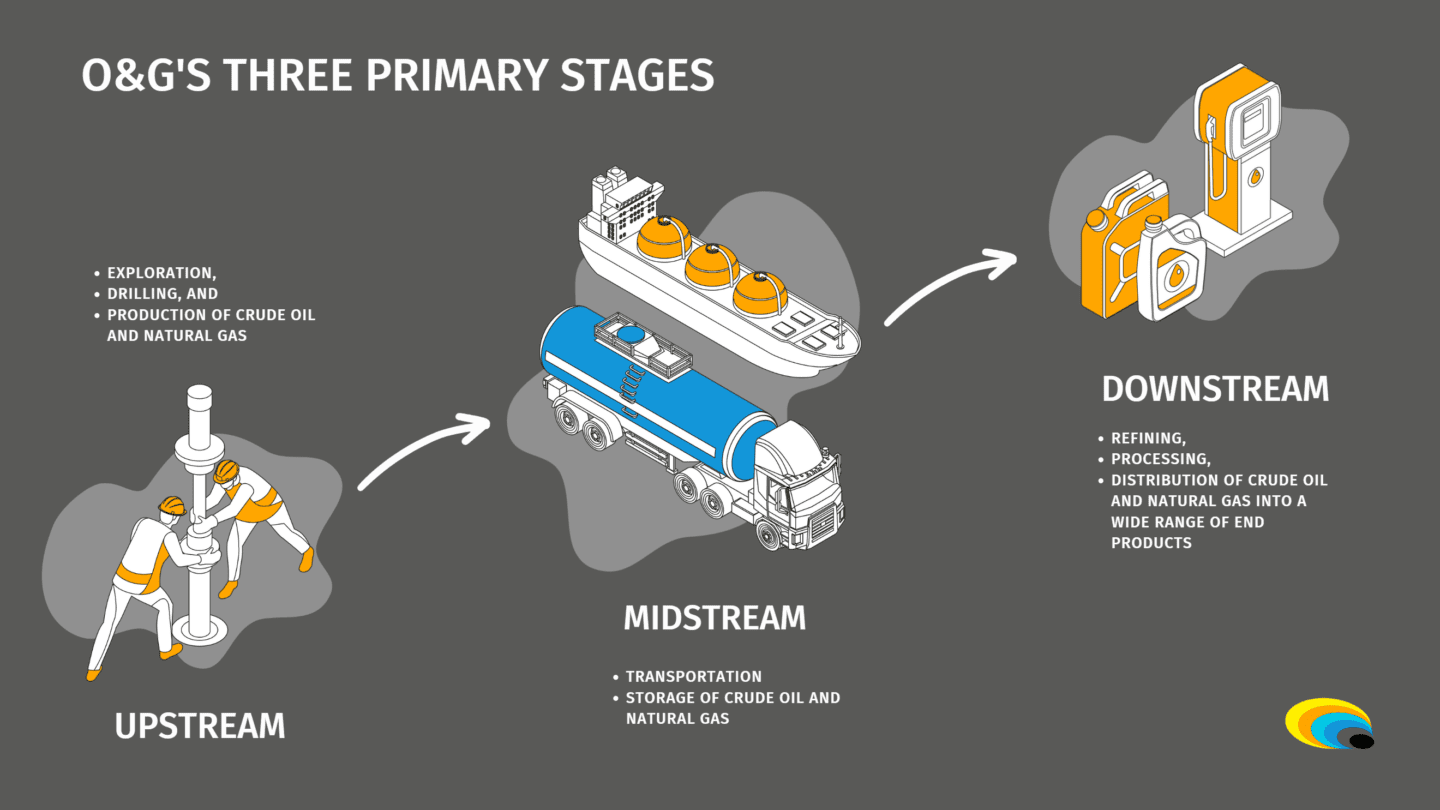What Is the Oil and Gas Industry? A Complete Guide from Upstream to Downstream
The Foundation of Modern Energy
The oil and gas industry forms the backbone of the global economy. It powers transportation, fuels industries, and provides essential materials used in manufacturing, construction, and consumer goods.
Even as renewable energy sources grow rapidly, oil and gas remain crucial, supplying over half of the world’s total energy demand, according to the International Energy Agency (IEA).
This complex sector is typically divided into three major segments:
-
Upstream – Exploration and production of crude oil and natural gas.
-
Midstream – Transportation, processing, and storage.
-
Downstream – Refining, distribution, and marketing of end products.
Each segment plays a vital role in ensuring that energy resources reach consumers efficiently and safely.

Upstream Oil and Gas: Exploration and Production
What Is the Upstream Sector?
The upstream sector, also known as the exploration and production (E&P) stage, focuses on locating underground or underwater oil and gas reserves, drilling wells, and extracting hydrocarbons to the surface.
Main Stages of Upstream Operations
-
Exploration and Surveying
-
Geologists and geophysicists use seismic imaging and remote sensing technologies to identify potential reservoirs.
-
Exploratory wells are drilled to confirm the presence of hydrocarbons.
-
-
Drilling and Well Construction
-
Wells are drilled using rotary rigs, which can operate onshore or offshore, depending on reservoir location.
-
Well integrity and pressure control are ensured using blowout preventers (BOPs) and high-strength casings.
-
-
Production and Artificial Lift
-
Once hydrocarbons are found, production begins.
-
Natural reservoir pressure may initially push oil to the surface, but as pressure declines, artificial lift systems such as Electric Submersible Pumps (ESP) or gas lifts are used to sustain output.
-
-
Well Testing and Reservoir Management
-
Engineers analyze production data to optimize flow rates and maximize recovery efficiency.
-
Technologies in Upstream
Modern upstream operations leverage advanced technologies such as:
-
3D seismic imaging for accurate reservoir mapping.
-
Directional drilling for reaching complex or deep targets.
-
Enhanced Oil Recovery (EOR) techniques to extend field life
The Midstream Sector: Transportation and Storage
What Is Midstream?
Once crude oil and gas are extracted, they need to be transported safely and efficiently to refineries or export terminals. This is where the midstream sector comes in — covering gathering, processing, transportation, and storage.
Core Midstream Operations
-
Oil & Gas Gathering: Collecting hydrocarbons from multiple production wells and consolidating them for transport.
-
Transportation: Via pipelines, tankers, rail, or trucks. For Indonesia’s archipelagic geography, sea transport plays a major role.
-
Gas Processing Plants: Removing impurities and separating natural gas liquids (NGLs).
-
Storage Facilities: Using tanks, terminals, and caverns to manage supply-demand balance and price stability.
The Downstream Sector: Refining and Distribution
What Happens in the Downstream Stage?
The downstream sector converts crude oil and natural gas into usable products — fuels, lubricants, petrochemicals, and more — that reach consumers and industries.
Major Downstream Processes
-
Refining: Crude oil is heated and separated in distillation towers into different fractions (gasoline, diesel, kerosene, etc.).
-
Petrochemical Production: Using by-products like ethylene and propylene to manufacture plastics, resins, and solvents.
-
Distribution: Delivering refined products to markets, power plants, and gas stations.
